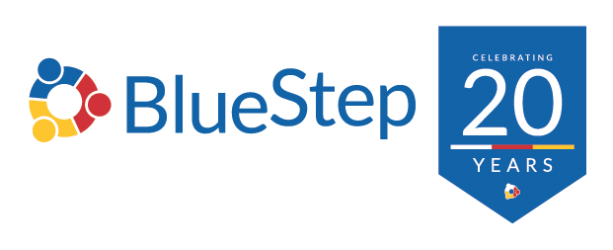In assisted living, maintaining open and effective communication with residents’ families is crucial to providing holistic care. Families entrust their loved ones to these communities, seeking assurance that their health, happiness, and well-being are in good hands. This is where the power of EHR comes into play, serving as a vital bridge between healthcare providers and families.
With their advanced capabilities, EHR systems have revolutionized the way information is shared in the healthcare sector, including assisted living environments. These digital records offer a transparent, efficient, and secure means of keeping families informed about their loved one’s health status, care plans, and daily activities.
By integrating EHR technology into assisted living communities, healthcare professionals open up new avenues for family communication, ensuring that families actively participate in the care process. This integration helps foster trust, peace of mind, and a collaborative care environment for everyone involved.
EHR and family communication
EHR has become a cornerstone in assisted living. They play a pivotal role in enhancing the quality of care and communication. The communication not only benefits patients and their families emotionally, but it is also helpful if patients ever need their families to help make medical decisions.
EHR systems are digital platforms that store and manage residents’ health information, including medical history, medication schedules, treatment plans, and daily care activities. In assisted living settings, where personalized care is essential, EHRs provide a comprehensive, accessible view of each resident’s health journey.
It’s impossible to overstate the importance of keeping families informed about their loved one’s care and well-being. Families often experience anxiety and concern about the health and happiness of their relatives in assisted living communities.
Regular, transparent communication through EHR systems alleviates these concerns, providing families with peace of mind and a sense of involvement in their loved one’s care. EHRs enable this by offering accurate, up-to-date information about residents’ health status, progress, and daily activities.
EHR systems streamline and enhance communication with families in several ways.
Firstly, they offer secure portals where families can access relevant health information conveniently. This fosters transparency and trust. These portals include updates on medical appointments, medication changes, or treatment plan progress.
Secondly, EHRs facilitate direct communication channels between families and healthcare providers. Through messaging features within the EHR, families can ask questions, provide updates, or express concerns, ensuring that communication is a two-way street.
Lastly, EHRs send automated alerts and notifications to families, informing them about significant health events or changes in care routines.
EHR systems in assisted living settings are more than digital records; they are dynamic tools that connect families with care providers, bridging gaps in communication and ensuring that families remain an integral part of their loved ones’ care journey.
By leveraging the capabilities of EHRs, assisted living communities foster a collaborative, transparent, and empathetic care environment where families feel reassured that their loved ones are receiving the best possible care.

Effective communication using EHR
In the context of assisted living, where family involvement is key to resident well-being, EHR offers a range of strategies to enhance communication. Here are some practical ways EHR accomplishes this:
1. Secure messaging and updates
EHR systems often include secure messaging features that allow care providers to send timely updates to family members. These messages could include general health updates, notifications of any changes in medication, or alerts about upcoming appointments. Secure messaging ensures privacy and provides direct communication between the facility and the family.
2. Access to care plans and health records
EHR systems grant family members access to their loved one’s care plans and health records. This transparency helps families understand the care being provided and track the progress of their loved ones. It also enables them to be more informed participants in care discussions.
3. Scheduling family meetings and visits
Assisted living communities use EHR platforms to facilitate or schedule family meetings or visits, effectively integrating these important interactions into the resident’s care plan. This feature helps maintain strong family connections, which are crucial for the emotional well-being of residents.
4. Sharing progress reports and health updates
Healthcare professionals share regular progress reports and health updates through EHR systems. These reports provide families with a detailed view of their loved one’s health status and any improvements or concerns, fostering a sense of involvement and reassurance.
5. Facilitating telehealth sessions with family involvement
EHR systems are used to schedule and conduct telehealth sessions that include family members, regardless of their physical location. This feature is particularly beneficial for families or family members who live far away but want to be involved in the care of their loved ones.
6. Custom alerts and notifications for families
Healthcare professionals can configure EHRs to send custom alerts and notifications to family members. These could be reminders about medication times, appointments, or special events at the facility. These alerts keep families engaged and informed about their loved one’s medical care and wellbeing.
7. Educational resources and support information
EHR systems provide families with access to educational resources and support information related to their loved one’s condition. These resources help families better understand and cope with the challenges of their loved one’s health issues.
By leveraging these strategies, EHR systems in assisted living communities significantly enhance family communication, ensuring that families are informed and actively engaged in caring for their loved ones. This approach fosters a collaborative environment where the care team and families work together for the best outcomes for residents.
Overcoming challenges in EHR family communication
Navigating family communication through EHR presents certain challenges. Understanding and addressing these challenges is key to creating effective, meaningful interactions between care providers, residents, and their families.
One common challenge is privacy concerns. Handling sensitive health information requires strict adherence to privacy laws and regulations. It’s crucial for assisted living communities to ensure that their EHR systems have robust security measures in place to protect resident data. Additionally, staff must have training on the importance of confidentiality and the proper protocols for sharing information with families.
Another challenge is the technological barrier that some family members may face. Not everyone is comfortable or familiar with digital platforms. To overcome this, assisted living communities can provide training and support to families, helping them navigate the EHR system.
Another way to overcome this is for assisted living communities to invest in assisted living software that is easy to use, straightforward, and accessible. User-friendly interfaces and easy-to-understand guides also make it easier for families to engage with the system.
Ensuring effective communication through EHR also involves more than simply sharing information. Effective communication is about ensuring all necessary information is clear, concise, and understandable. Medical jargon and complex health data often need to be clarified for families. Care providers should aim to communicate in a way families can easily understand by providing summaries or explanations alongside medical reports.
By addressing these challenges, assisted living communities enhance the effectiveness of EHR as a tool for family communication. Ensuring privacy and security, making technology accessible and user-friendly, and communicating clearly and simply are all essential steps in fostering a transparent, trust-filled relationship between families and care providers.
Best practices for implementing EHR communication
For healthcare providers in assisted living communities, effectively using EHR for family communication involves adhering to several best practices.
Firstly, comprehensive staff training is essential for healthy patients and effective communication. This training should cover the technical aspects of the EHR system and the nuances of sensitive and empathetic communication and bedside manner. Staff should know how to guide families in using the system and understanding the information they find there.
Privacy must be a top priority. Providers should ensure that all communication through EHR systems complies with privacy laws and regulations, like HIPAA. Measures for protecting privacy include securing data and controlling access so only authorized family members can view sensitive information.
Finally, personalization is key. Assisted living professionals should tailor their communication strategies to meet the specific needs and preferences of each resident and their family. This might involve customizing the frequency and type of updates or providing different information formats to cater to varying levels of tech-savviness among family members.
By focusing on these best practices, healthcare providers leverage EHR systems to enhance family communication. This ultimately fosters stronger relationships and better care outcomes.

Beyond EHR: the BlueStep difference
At BlueStep Systems, we pride ourselves on being at the forefront of innovative healthcare solutions. We have been bringing new, effective solutions to the healthcare industry for the past 20 years. Our applications help hundreds of thousands of healthcare providers, patients, non-profits, and corporations worldwide.
Explore our various software creations, each designed to enhance the efficiency and effectiveness of healthcare services ranging from ManageRx for pharmaceuticals to ManageMAR for assisted living communities.
We invite you to experience the transformative power of our products firsthand. Contact BlueStep today to request a demo and discover how we can support your journey toward advanced, integrated healthcare solutions.


